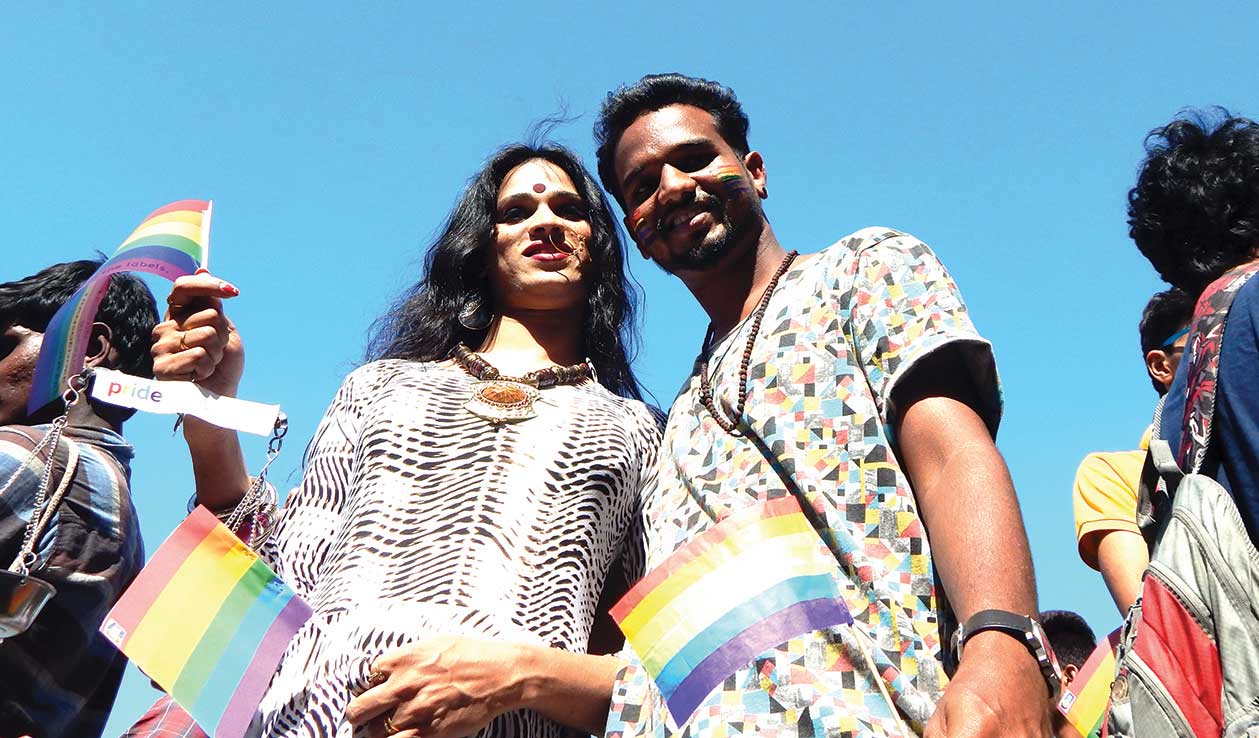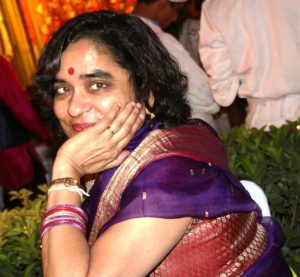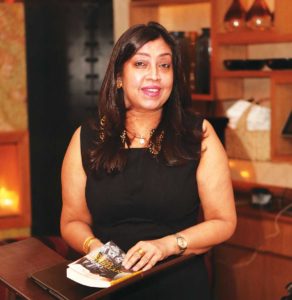Books
Gay Literature in India

If gay literature in India has been progressively ahead of its time, then why has mainstream society been so behind?
During the great global financial crisis in 2008, when the world was coming to grips with the great recession, there was also something socially eventful happening in India. The first Gay Pride March was organized in Bangalore. And even though the two events are unrelated, almost in a metaphorical way, both signaled a simmering, underlying phenomenon that was just waiting to explode.
Cut to 2017, the world still continues to grapple with the after-effects of the financial crisis with lurking fears of another recession. But the sexuality movement that gained ground in India during the noughties continues to build up steam. Today, Pride Parades are held in many cities all over India, from Guwahati to Gujarat and Bhubaneswar to Bhopal.
In most metro cities, there is a burgeoning gay subculture. Although homosexuality remains a crime in India, as the law is pending review in Supreme Court, there is a newfound acceptance toward homosexuality in urban India.
Even though traditional Indian literature celebrated and accepted alternate sexualities in India, under British rule the country became prudish on sexual matters.
In 1942, noted playwright Ismat Chughtai’s Urdu short story Lihaaf, raised eyebrows and a lawsuit for featuring a homosexual character.
Not only did Chugtai win the court case, the work became one of her most celebrated.
During the 1970s and 1980s, gay characters began resurfacing in Indian literature. In 1977, Shakuntala Devi wrote the first study of homosexuality in India. Late Playwright Vijay Tendulkar’s 1981 Marathi play, Mitrachi Gosta, centered around a lesbian relationship, brought alternate sexuality to the fore.
The fact that the play remains socially relevant even today was highlighted when an English retelling of the play was held in Mumbai in 2015. The 1980s were also dominated with other remarkable writings on the subject, notably by Britain based, Indian origin writer Suniti Namjoshi, such as The Feminist Fables and The Conversations of Cow.
The 1990s saw playwright Mahesh Dattani’s plays, such as Dance Like A Man and Seven Steps Around Fire, set amongst the hijra community in India. London based, Indian origin writer Firdaus Kanga wrote a semi-autobiographical novel, Trying to Grow, on a young disabled man’s sexual awakening. The novel was later turned into a movie in which Kanga starred. Authors Shobha De, Anita Nair and Manju Kapoor all dealt with lesbian themes in their novels.
Despite the voluminous gay literature, mainstream conversations and entertainment in India chose to ignore or brush the subject inside the carpet.

Ruth Vanita: Social attitudes are changing rapidly. However, most Indians are ignorant about pretwentieth century Indian literature.
Ruth Vanita and Saleem Kidwai jointly edited an impressive anthology in 2001, titled Same Sex Love in India: Readings in Indian Literature, which chronicled the literary history of gay writing in India beginning from the ancient epics, such Mahabharata to Kamasutra, to contemporary works. Since then Vanita, who is now director of Global Humanities and Religion at the University of Montana, has written copiously on the subject with works, such as Queering India: Same Sex Love and Eroticism in Indian Culture and Society and Loves’ Rite: Same Sex Marriage in India and the West.
Vanita said: “I was educated entirely in India, right up to the PhD, and same-sex love was never mentioned in any class. I found it hard to believe that in thousands of years of writing in India, nothing had been written on the subject. I also could not believe the myth that same-sex desire is an import into India. Our education was highly inadequate as far as exposing us to pre-modern Indian literatures. I therefore had to educate myself by reading scores of texts, and this was an illuminating experience, which brought me back to the religious practices of my ancestors. The book Same-Sex Love in India (2000), edited by Saleem Kidwai and me, compiles translations, from the Mahabharata and Kamasutra to the twentieth century.”
THE NEW NORMAL
During the past decade, works on and about homosexuality have grown considerably.
Many contemporary authors are also introducing gay characters in their books, not to make a statement, but because they believe they are part of normal society.
Oakton, Virginia, based author, Braham Singh just released his book Bombay Swastika in India. The thriller that swings from Nazi Berlin to Bombay also talks about a homosexual character and amongst its fast paced storyline the book captures the plight of homosexuals. Singh says, “My book is not about homosexuality, but it has a homosexual character and I consider it a normal part of the storyline.”

Braham Singh: “My book is not about homosexuality, but it has a homosexual character and I consider it a normal part of the storyline.”
Singh believes the smugness about the topic is ironic: “Growing up in India I had a gay brother at home. When I went out, it was normal for eunuchs on the road and the red lights to approach us. This was always right there in front of us. So relating about alternate sexuality for me is talking about a clearly existent part of the society.”
In an attempt to encourage gay readings, in 2010, Queer Ink, an online platform was formed for LGBTs in India. Shobhna Kumar, who founded Queer Ink as an online bookstore, has since then expanded it into publishing as well.
Contemporary writers also see gender imbalance at play. Anita Kumar who released her book Cappuccino Confessions in August, discusses homosexuality and infidelity through an unconventional mother-daughter relationship.
She says, “It was important for me to talk about a female protagonist struggling to repress her sexuality and finally coming out with it as I wanted it to serve as an inspiration for many. There is lot of bias prevalent. Today in the new chi-chi circles of society, while male gay designers are accepted even revered, there are still hardly any women homosexuals who are open about their sexuality.”

Anita Kumar
The 2006 book by Maya Sharma, Loving Women: Being Lesbian in Unprivileged India takes us through a thought-provoking journey to the contemporary, working-class lesbian life in India.
Kumar believes that writings on lesbianism are still underrepresented: “As I depict in my book, mostly it is the women who are forced to repress their sexuality leading to emotional complications.”
A COLONIAL PROBLEM
The 2006 book by Devdutt Patnaik, the Man Who Was A Woman and Other Queer Tales from Hindu Lore, masterfully encompasses ancient Indian stories of gender transformations and the existence of the third sex, the hijras, in Hindu scriptures. Activists and academicians in homosexual studies stress that ancient India has always treated alternate sexuality as a way of life.
Author Braham Singh says: “This smugness towards homosexuality amongst Indians is a result of the Victorian values brought along by the British. In ancient India all our texts pointed out towards the easy co-existence of the third sex. From Mahabharata, where Arjun dresses like a woman and adopts the gait of a woman, to Pahadi paintings in India, where you see Krishna dressed as drag, or the famous Lord Shiva, who is according to mythology half man and half woman, there is so much that indicates that ancient India was far accepting towards the alternate.”
Even though so much that has been written about sexuality is drawn from scriptures and ancient texts, mainstream acceptance of gays has been hard. Ruth Vanita says: “Social attitudes are changing rapidly. However, most Indians are ignorant about pre-twentieth century Indian literature. For example, most Hindus have imbibed Hindu narratives from grandmothers’ stories, Amar Chitra Katha, television or recent rewritings. These versions are very different from the originals in the Puranas. Many urban Indians speak their own language, but read only in English. And even in English, they rarely read original texts. Even more important, very few read philosophical texts. They may know some stories of the Mahabharata (without having read it) but beyond the Gita, they are unlikely to read any philosophy. How many have read the Upanishads? An understanding of same-sex desire is rooted in an overall understanding of desire and pleasure as these fit into a worldview and a view of life.”
She adds: “Colonial puritanical attitudes and Victorian notions of sin and guilt are still dominant. Likewise, those Indians who read Urdu rarely read eighteenth or early nineteenth-century literature in any depth. If they did, they would find large numbers of Muslim poets writing happily about cross-sex as well as same-sex love and attraction.”
THE EXPAT ATTITUDE
Since many Indian origin authors who have worked on the subject are also now based abroad, it is natural to wonder if the attitudes of overseas Indians toward homosexuality are different from Indians in India. Singh says: “For people my daughters generation, who have been born and brought up in India, it really does not matter. But I would say for people my generation, many are still living in a time warp with all their prejudices.”
Vanita says: “It is impossible to generalize about Indians or Indian Americans. Attitudes vary widely. But I do think changes in law make a difference. For example, after same-sex marriage was legalized in the U.S., many more Hindu priests in the U.S. became willing to officiate at Hindu weddings. As long as the anti-sodomy law instituted by the British remains in place in India, it’s hard for family members to accept same-sex relationships, because they fear the repercussions of the law. Despite this, many parents do bravely support their gay children.”
1 Comment
You must be logged in to post a comment Login

Pingback: [NEWS] Five LGBTQ links: Metropolitan Community Church, Jeff Rock, PFLAG China, Indian lit, Satanism | A Bit More Detail